The Blue Bearded Dragon: A Rare Reptilian Wonder
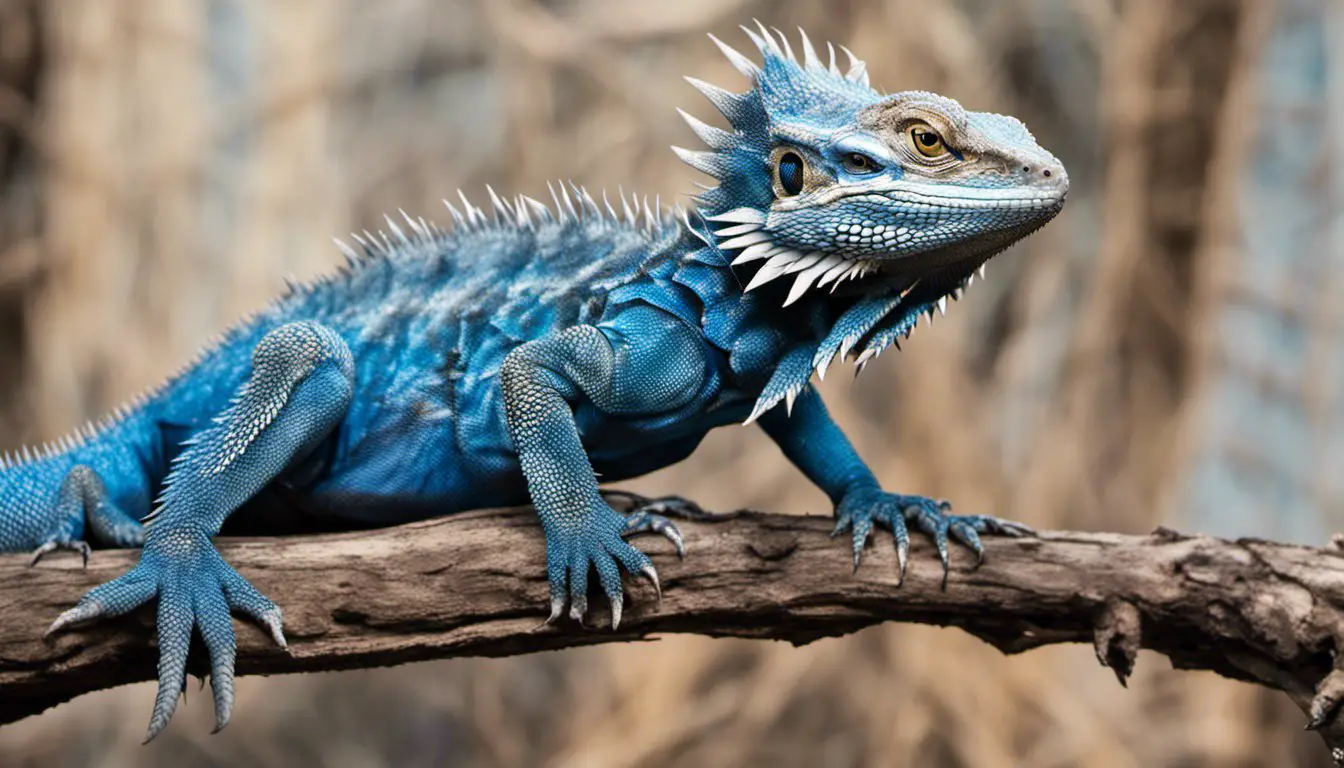
The world of bearded dragons is a fascinating realm, filled with a dazzling array of morphs, colors, and species. Among these captivating creatures is the elusive Blue Bearded Dragon, whose enchanting appearance has captured the hearts of reptile enthusiasts worldwide. But what exactly makes a bearded dragon blue, and how do these captivating creatures differ from their more common counterparts?
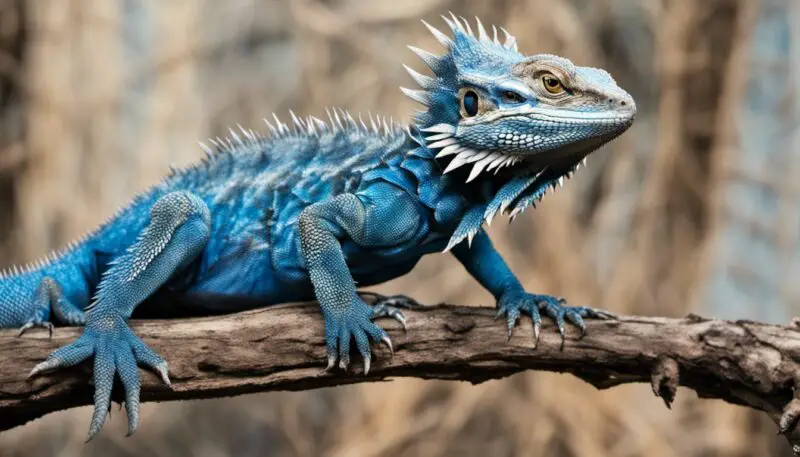
In this blog post, we will delve into the origin of the blue coloration in bearded dragons, explore various morphs and color variations, discuss breeding techniques for unique colors and patterns, and offer guidance on caring for your very own blue bearded dragon.
As we embark on this journey together, you will gain a deeper appreciation for the diverse world of bearded dragons and perhaps even discover a newfound passion for these awe-inspiring reptiles. So without further ado, let’s dive into the mesmerizing realm of blue bearded dragons and uncover the secrets behind their captivating hues.
Contents
Table of Contents
Short Summary
Bearded dragons come in various morphs and colors, including blue-toned scales.
Breeders have developed unique colors and patterns through selective breeding.
Proper care is essential to ensure the well-being of your Blue Bearded Dragon.
Understanding the Blue Bearded Dragon
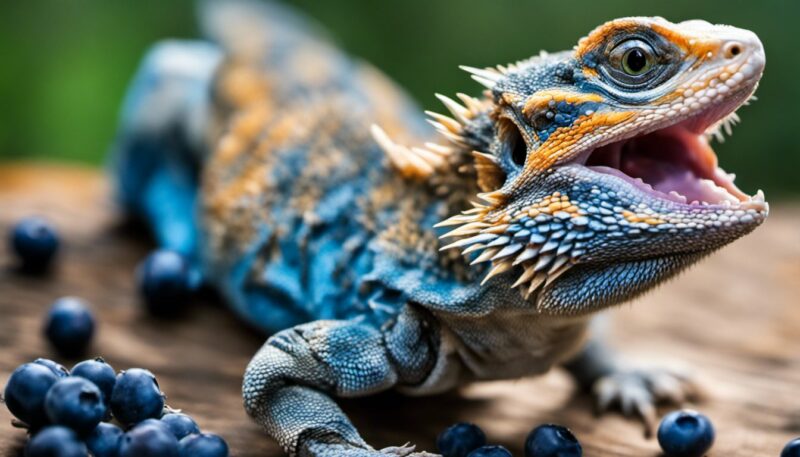
Blue coloration in bearded dragons combines genetic and environmental factors, making them one of the most intriguing types of bearded dragon species. While there are no true blue bearded dragons, as their color does not remain constant for a lifetime, some translucent or purple bearded dragons may have a blue tint as hatchlings.
The most prevalent pet bearded dragon species is the Pogona vitticeps, which includes various morphs such as dunner bearded dragons. All bearded dragons originate from Australia, making them exotic animals requiring special care and attention.
The blue morph describes translucent bearded dragons with pale, almost transparent scales. Other factors that might influence the color of a bearded dragon include genetics and environmental conditions, such as the rare possibility of an albino bearded dragon. With so many fascinating factors at play, it’s no wonder that blue-bearded dragons have become a sought-after addition to the reptile community.
Blue Tint in Hatchlings
Translucent bearded dragons are particularly fascinating due to their unique blue or purple tint as hatchlings. This tint results from their pale, almost transparent scales, giving them a distinctive appearance. As they grow, however, this blue coloration typically fades after a few months of growth, resulting in a more muted hue.
The stomach of a translucent bearded dragon hatchling is a clear blue color, further adding to its enchanting appeal. The bearded dragon’s scales significantly influence its overall appearance and charm.
It’s important to note that the hypomelanistic morph can be a characteristic of the translucent morph in bearded dragons. This means that these individuals may have a reduced amount of melanin, the pigment responsible for their dark coloration, resulting in a lighter and more pastel appearance overall.
Other Morphs with Blue-toned Scales
While translucent bearded dragons are perhaps the most well-known for their blue-toned scales, other morphs, such as the Dunner or pastel, can also possess these captivating hues. The key distinction between these species and translucent bearded dragons is their eye color; translucent individuals have very dark brown or black eyes, whereas other morphs typically have light amber or orange eyes.
Two other prevalent white bearded dragon morphs are Snow and Blizzard, with Blizzards characterized by a pure white hue with no gray markings and Snow bearded dragons displaying gray markings along their back and sides. These morphs and the blue-toned translucent bearded dragons add to the diverse and fascinating world of bearded dragon colors and appearances.
Comprehensive Guide to Bearded Dragon Morphs
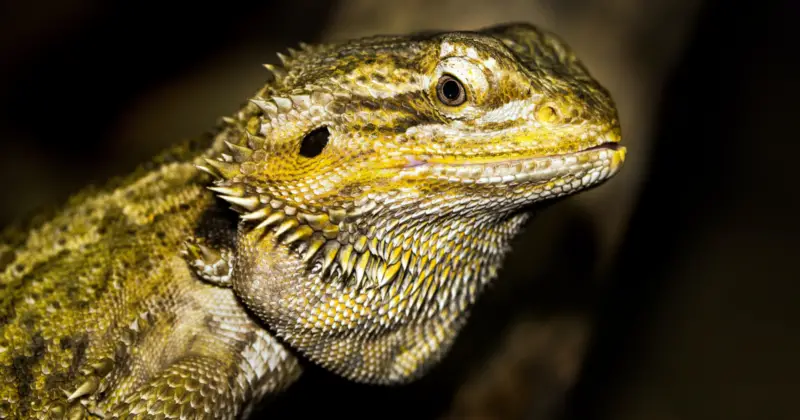
Bearded dragons vary in colors, patterns, size, and body/head shape. Additionally, they may differ in terms of:
spikes
scales
eye color
nail color
Hobbyists have created many color varieties and unique patterns in bearded dragons through selective breeding and an understanding of genetics. These captivating creatures come in a wide range of morphs, each with their own distinct characteristics and appearances.
Some of the more popular morphs include:
The classic/standard morph, which resembles the wild counterpart of the bearded dragon
The hypomelanistic morph, characterized by pastel colors, clearer nails, and fewer dark patterns
The leatherback morph, known for its smooth back and vivid colors
The German giant morph, which is another sought-after variation among bearded dragon enthusiasts
The following sections’ll closely examine these morphs and explore their unique traits.
Classic/Standard Morph
The Classic/Standard Morph is the most widely encountered type of bearded dragon, exhibiting characteristics similar to its wild counterpart. Typically seen in shades of tan or brown, the Classic Morph may also display red or yellow hues, with possible black or orange markings.
Although these bearded dragons may not be as visually striking as some more exotic morphs, their natural beauty and hardy nature make them popular among reptile enthusiasts.
While the Classic Morph shares many similarities with its wild cousins, it is important to remember that it is still a captive-bred animal and requires proper care and attention. Providing an appropriate diet, habitat, and health considerations ensures that your Classic Morph bearded dragon thrives in its new environment.
Hypomelanistic Morph
The Hypomelanistic Morph is a striking bearded dragon variety, characterized by its reduced levels of melanin, which results in a lighter-colored appearance. These bearded dragons typically display white or muted yellow colors, with nails of yellow, white, or clear shades.
Physically, the Hypomelanistic Morph’s body and spiny arrangement are similar to that of a Classic Morph bearded dragon.
Within the Hypomelanistic Morph category are subcategories such as the Witblit and Zero morphs, each with unique characteristics. Witblit bearded dragons, for example, are characterized by a very pale coloration and lack of patterns, while the Zero morph is defined by its complete lack of pigmentation, except for some black near the shoulders in some cases. These captivating morphs showcase the incredible diversity of bearded dragon colors and appearances.
Leatherback Morph
The Leatherback Morph is a rare and visually stunning bearded dragon variety, known for its smooth back and lack of spikes or scales along its dorsal surface. This unique characteristic results in the colors of the Leatherback Morph appearing more vivid and bright than those of other bearded dragon varieties.
While the Leatherback Morph may be more difficult to find than some of the more common morphs, its striking appearance makes it a highly sought-after addition to any reptile collection.
Just like other bearded dragon morphs, the Leatherback Morph requires proper care and attention to thrive. Providing an appropriate diet, habitat, and health considerations is essential for ensuring the well-being and longevity of your Leatherback bearded dragon.
Color Variations in Bearded Dragons

In addition to the incredible variety of morphs, bearded dragons also come in various colors, ranging from red, yellow, and orange to green, blue, and even purple. These captivating hues result from selective breeding and genetic variations that produce different shades and patterns in bearded dragon scales.
Some more common color variations include citrus morphs, characterized by strong yellow colors and a sandy pattern, and red morphs, selectively bred to produce vibrant red patterns.
Orange bearded dragons, another popular color variation, possess a more vibrant and intense orange hue than wild-type dragons’ duller tan and orange. The most prevalent orange morphs include:
Solid orange
Tangerine
Sandfire
Sunburst
Each morph has its own distinctive characteristics and appearances. For example, tangerine morphs possess a very distinctive bright orange body with yellow highlights, while Sandfire red morphs have a red body color with accents of yellow and orange.
As reptile enthusiasts continue to breed bearded dragons for unique colors and patterns selectively, the possibilities for new and exciting color variations are virtually limitless. Whether you’re drawn to the fiery hues of red and orange morphs, the soothing shades of blue and green bearded dragons, or the striking contrast of black and white, there’s a bearded dragon color variation out there to suit every taste and preference.
Types of Bearded Dragons – Colors & Morphs Explained
Breeding Techniques for Unique Colors and Patterns
Breeders have long been fascinated by the potential to create unique colors, patterns, and behaviors in bearded dragons through selective breeding. By carefully selecting parent bearded dragons with desirable traits and understanding the genetics behind these traits, breeders have produced new and exciting bearded dragon morphs and color variations.
For example, the development of super red bearded dragons was achieved through selective breeding bearded dragons with high amounts of red pigmentation, resulting in almost entirely crimson offspring. Through continued selective breeding, breeders can further refine and enhance the colors and patterns of bearded dragons, creating even more stunning and captivating reptile companions for enthusiasts to enjoy.
Caring for Your Blue Bearded Dragon
Caring for your blue bearded dragon requires dedication and attention to detail, as these captivating creatures have specific needs that must be met to thrive. Proper care includes providing a suitable diet, habitat, and health considerations for your bearded dragon.
As omnivorous creatures, blue bearded dragons require a diverse diet that includes a range of insects, vegetables, and fruits. Providing a spacious enclosure with appropriate lighting, heating, and humidity levels is also essential for their well-being.
In terms of health, it’s important to be aware of signs of illness, such as loss of appetite, lethargy, and changes in behavior, and to provide the appropriate calcium supplementation, lighting, and heating to prevent common health issues.
Common Health Issues in Blue Bearded Dragons
While blue bearded dragons can make wonderful companions, it’s important to be aware of potential health issues that may be more prevalent in these unique reptiles. Female bearded dragons are vitellogenic and gravid from spring to early summer, during mating and egg-laying season, which may increase the risk of health issues such as egg binding, hemipenile plugs, and egg yolk peritonitis.
Signs of hemipenile plugs in male bearded dragons may include plugs protruding from the hemipenis and a swollen vent.
To minimize the risk of these health issues, it’s crucial to provide proper care for your blue bearded dragon, including a suitable diet, habitat, and health considerations. By closely monitoring your bearded dragon’s health and addressing any concerns promptly, you can help ensure that your blue bearded dragon remains a happy, healthy, and vibrant member of your reptile family.
Myths and Misconceptions about Blue Bearded Dragons
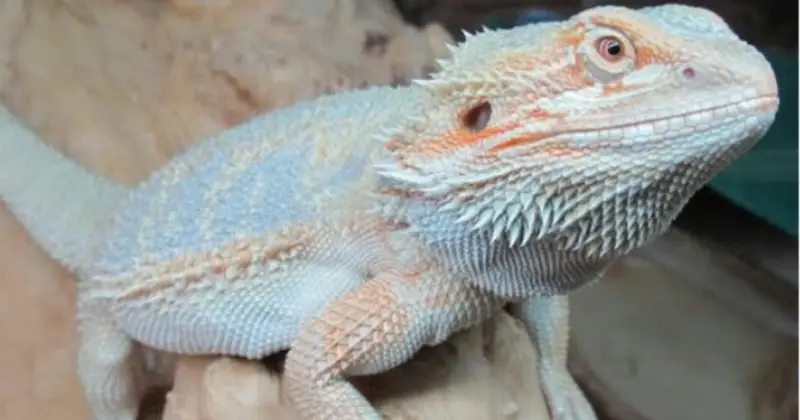
Like all exotic reptiles, blue bearded dragons are often subject to myths and misconceptions that can lead to confusion and misunderstanding. Some of the most common myths surrounding blue bearded dragons include the notion that they are aggressive, require special care, and are difficult to breed. In reality, blue bearded dragons are just as docile and easy to care for as any other bearded dragon morph, provided they are given appropriate care and attention.
It’s essential for reptile enthusiasts to separate fact from fiction regarding blue bearded dragons. By educating yourself about these captivating creatures’ true nature and care requirements, you can help ensure that your blue bearded dragon thrives and is a fascinating and rewarding addition to your reptile collection.
Summary
Throughout this blog post, we’ve explored the fascinating world of blue bearded dragons, delving into the origin of their captivating coloration, the variety of morphs and color variations available, and the breeding techniques used to create these unique reptiles. We’ve also discussed the proper care and attention needed for blue bearded dragons, common health issues, and myths surrounding these enchanting creatures.
Whether you’re an experienced reptile enthusiast or just beginning your journey into the world of bearded dragons, we hope this blog post has provided valuable insights and inspired a newfound appreciation for these remarkable reptiles’ incredible diversity and beauty. With proper care, attention, and understanding, blue bearded dragons can serve as captivating companions that bring endless fascination and enjoyment to your life.
Frequently Asked Questions
Are there blue bearded dragons?
Yes, blue and purple bearded dragons are very rare, but possible.
How much do blue bearded dragons cost?
On average, blue bearded dragons cost around $50-$100. Prices may vary depending on the seller and the size of the dragon.
What are blue bearded dragons called?
Blue bearded dragons are the rare result of breeding translucent dragons together, resulting in a unique blue tint across the body. Unfortunately, these colors usually fade as they reach adulthood.
What is the rarest bearded dragon ever?
The rarest bearded dragon ever is the Zero Morph, known for its lack of patterns and colors. With increasing popularity, these white-colored dragons are becoming a sought-after breed.
What is the rarest reptile in the world?
Lonesome George, the single living specimen of Geochelone elephantopus Abingdon, also known as the Pinta Island giant tortoise, makes it the world’s rarest reptile. This species of giant tortoise is endemic to the Galapagos Islands and is believed to have been extinct since the late 19th century. However, in 1971, a single individual was discovered on the island of Pinta, and since then, it has become known as Lonesome George.


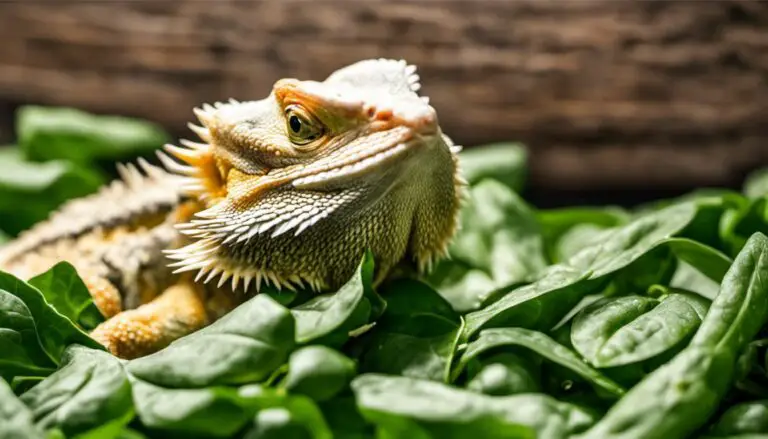
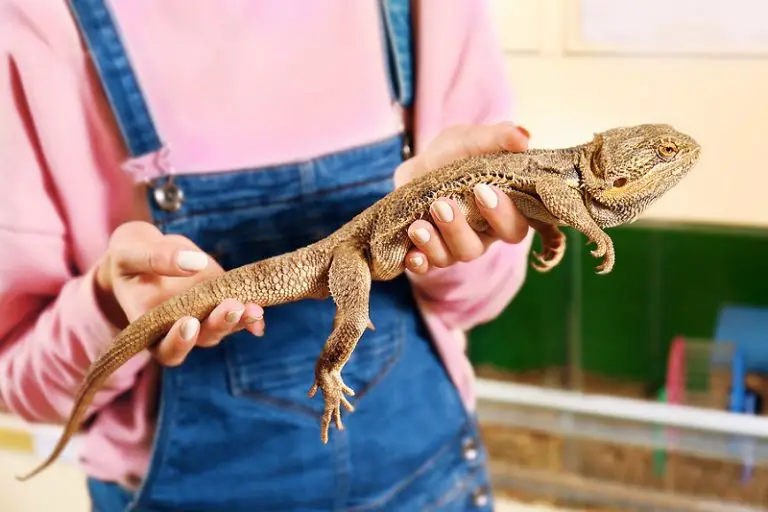

![Are Bearded Dragons Good Pets For Kids? [Full Guide]](https://allourcreatures.com/wp-content/uploads/2021/11/bearded-dragons-and-kids-768x514.jpg)
![How Many Mealworms To Feed A Bearded Dragon? [Read Now]](https://allourcreatures.com/wp-content/uploads/2021/10/How-Many-Mealworms-To-Feed-A-Bearded-Dragon-2.jpg)